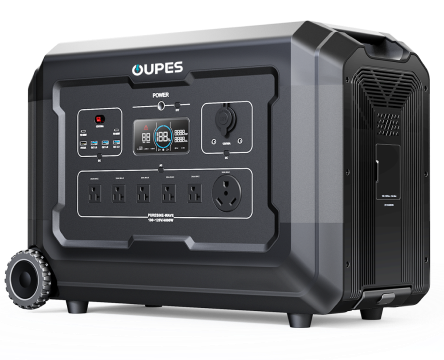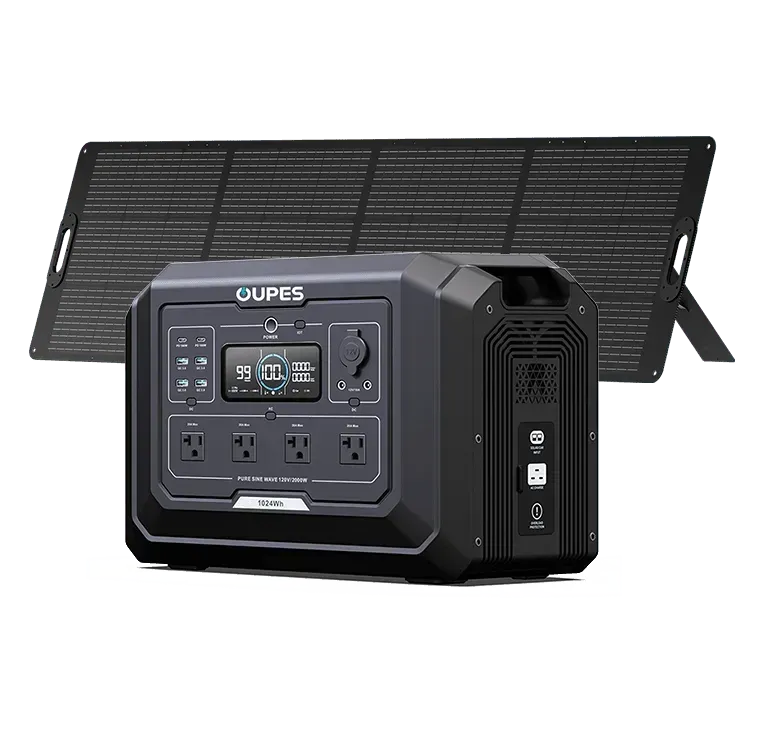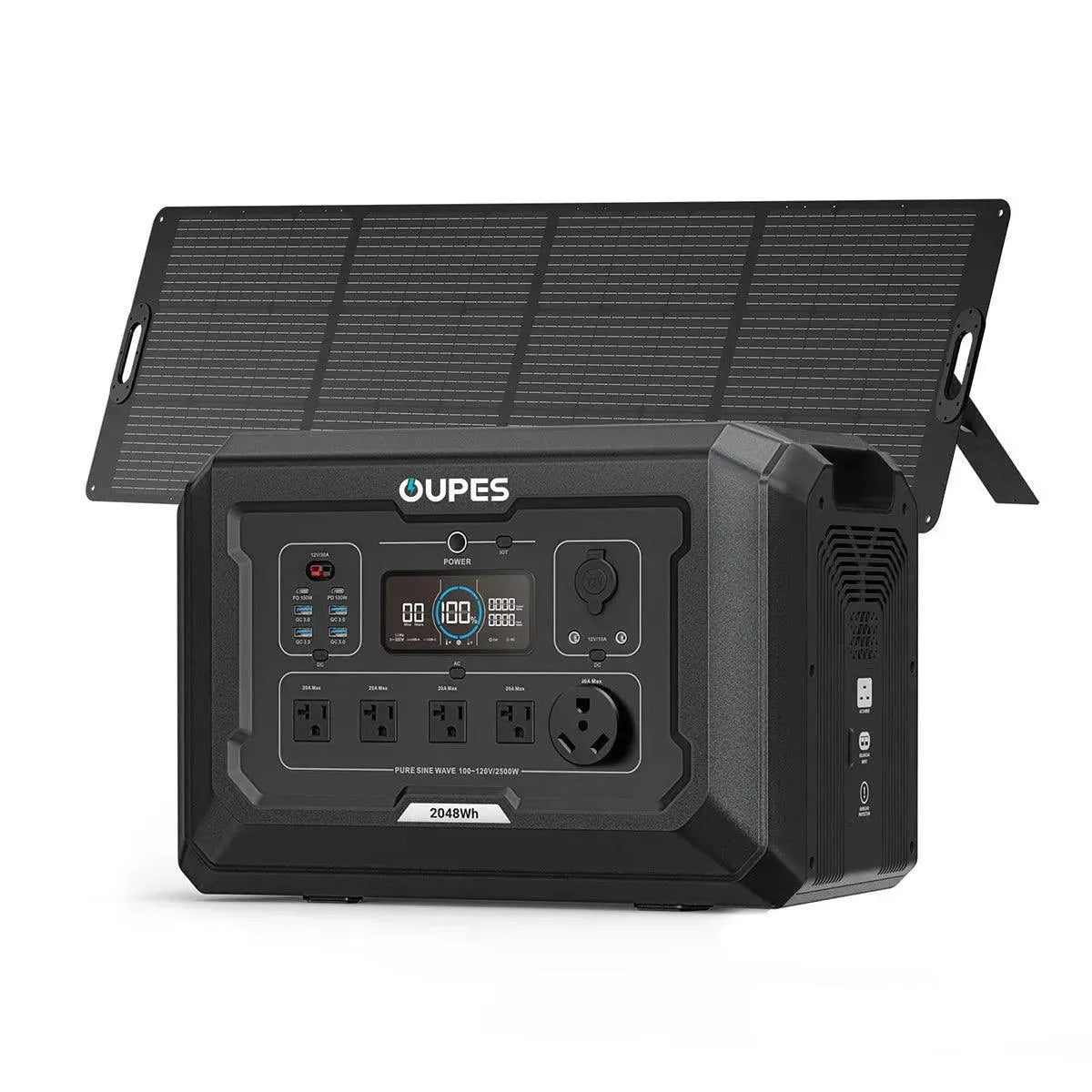
As hurricane winds snap power lines and winter storms paralyze grids, homeowners face a critical decision: trust the crumbling infrastructure or take control of their energy destiny. The average U.S. household endures eight hours of annual outages—a number skyrocketing to 100+ hours in disaster zones. When life-supporting medical devices go dark and frozen pipes threaten to burst, your backup power choice becomes the thin line between comfort and catastrophe. Let's explore the technologies transforming vulnerable dwellings into unshakeable fortresses of resilience.
Generator Systems: The Combustion Contingency
Portable gasoline generators offer immediate accessibility with 3,000-8,500W outputs at $400-$1,200 price points. Their appeal fades during sustained crises: A 5-gallon tank lasts merely 8 hours at half load, demanding dangerous refueling expeditions in storms. Noise becomes another penalty—75-90 decibels creates neighborhood tension equivalent to constant lawnmower operation beside bedrooms. More critically, carbon monoxide risks necessitate outdoor placement 20+ feet from windows, creating vulnerability during blizzards or flooding.
Standby natural gas units solve refueling with utility connections, automatically activating within 30 seconds of outage. Yet installation complexities emerge: They require poured concrete pads, upgraded gas lines, and transfer switches costing $10,000-$15,000 installed. The Achilles' heel? During the 2021 Texas freeze, compressed pipelines left generators dead. Propane variants offer superior fuel stability but demand massive 500-gallon tanks consuming valuable yard space. Diesel generators excel in longevity but emit toxic fumes requiring professional ventilation systems, while their rumble violates noise ordinances in 78% of urban communities.
Maintenance forms a relentless ritual. Gasoline units need carburetor cleaning every 30 inactive days—neglect causes 62% of failure during emergencies. Standby models demand quarterly oil changes and monthly test runs. Fuel degradation plagues all combustion systems: Stored gasoline lasts 6 months, diesel 1 year, propane 2 years maximum. For homeowners seeking simplicity, these operational burdens often outweigh the apparent affordability.
Battery Backup: The Silent Energy Reservoir
Lithium iron phosphate (LFP) batteries revolutionize home backup with zero emissions and 20-millisecond activation—faster than most lights flicker. Unlike generators requiring warm-up, systems like OUPES Mega 5 maintain continuous power for sensitive electronics and HVAC systems. Their modular architecture scales from 10kWh (8 hours of essentials) to 30kWh+ (multi-day whole-home coverage), adapting as needs evolve. Silent operation preserves neighborhood harmony during prolonged outages, while indoor installation eliminates weather vulnerabilities.
Chemistry dictates real-world performance. While lead-acid batteries degrade rapidly below 50% discharge, LFP technology delivers 95% usable capacity with 6,000+ cycle lifespans—tripling traditional options. Advanced battery management systems (BMS) provide critical protection: Cell balancing prevents premature failure, temperature regulation maintains -4°F to 122°F operation, and surge handling manages 200% overloads for motor startups. Wi-Fi monitoring enables real-time usage tracking and automated alerts before critical drain.
The $12,000-$25,000 investment stings initially but carries long-term advantages. Federal tax credits slash 30% off installed costs, while grid services programs pay $200-$800 annually for supplying stored power during peak demand. With minimal maintenance—annual capacity calibration versus weekly generator servicing—batteries become set-and-forget guardians. Their true value emerges during medical emergencies: No fumes allow basement installation adjacent to life-support equipment, and silent operation preserves sleep during health crises.
Solar Hybrid Systems: The Self-Sustaining Ecosystem
Integrating solar panels with batteries creates an infinitely renewable backup solution. During daytime outages, panels power homes directly while replenishing batteries—enabling indefinite operation in sunny conditions. This eliminates generator fuel costs and supply chain anxieties. Critical to functionality is "islanding" capability: Advanced inverters like those in OUPES systems safely disconnect from the grid while maintaining solar generation during blackouts, a feature absent in standard grid-tied solar.
Strategic panel placement maximizes resilience. South-facing arrays capture peak sun but fail during early/late emergencies. East-west configurations extend production windows, powering breakfast blackouts or evening grid failures. Micro-inverters prevent partial shading from crippling entire systems—vital when storms leave debris on panels. For winter reliability, ground-mounted arrays avoid snow accumulation that paralyzes roof installations. Battery-to-solar ratios determine sustainability: A 10kW solar array paired with 20kWh storage typically recharges fully in two sunny days.
New technologies enhance this synergy. DC-coupled systems avoid 8% conversion losses by channeling solar energy directly to batteries. Hybrid inverters enable "pass-through" mode, running high-wattage appliances like ovens directly from solar during peak production without draining reserves. Smart charge controllers dynamically allocate surplus energy: During outages, they prioritize battery charging over non-essentials like pool pumps. Weather-learning algorithms pre-charge batteries to 100% when storm forecasts predict cloudy days ahead.
Critical Load Management: The Efficiency Multiplier
Strategic circuit prioritization extends runtime exponentially. A typical home has 30+ circuits, but only 5-10 are essential during outages. Installing a critical load panel physically separates life-supporting circuits (refrigeration, medical devices, furnace) from non-essentials (saunas, AC units). This $1,500-$3,000 upgrade can reduce power demand by 60%, transforming an 8-hour battery into a 20-hour solution without additional capacity costs.
Smart panels like OUPES Nova automate load shedding with surgical precision. These systems monitor consumption in real-time, disengaging non-priority circuits when demand approaches battery limits. They learn usage patterns too—delaying dishwasher cycles until solar production peaks or temporarily disabling EV chargers during HVAC operation. During extreme shortages, they might dim lights by 15% or raise thermostat setpoints 2°F—micro-adjustments adding cumulative hours of backup.
Efficiency retrofits deliver compounding benefits. Replacing a 15-year-old 5-ton AC (5.8kW) with an inverter model (2.2kW) more than doubles battery coverage. Heat pump water heaters use 70% less energy than resistance units, while induction cooktops outperform electric coils with 50% faster boiling at half the wattage. LED lighting conversions save 1kWh daily—enough to power a refrigerator for four extra hours during crises. These upgrades often pay for themselves in reduced system sizing requirements.
Future-Proofing Your Energy Resilience
Scalability ensures systems evolve with changing needs. Modular battery platforms allow adding 5kWh increments when installing energy-intensive additions like home dialysis machines or EV chargers. Forward-compatible inverters accept next-generation batteries, protecting against technological obsolescence. Cloud-upgradable firmware enables new features—recent OUPES updates added wildfire smoke detection that pre-charges batteries when air quality plummets.
Grid service participation offsets ownership costs. Virtual Power Plant (VPP) programs pay homeowners $100-$250 annually per installed kWh for sharing stored energy during regional peak demand. A 20kWh battery can earn $800 annually while strengthening community grids—funds that finance future capacity expansions. These controlled discharges actually benefit lithium batteries by preventing capacity degradation from long-term inactivity.
Emerging technologies promise radical improvements. Solid-state batteries projected for 2028 offer double current energy densities—20kWh in today's 10kWh footprint. AI-powered energy prediction engines analyze weather patterns and usage history to optimize charging cycles. Hydrogen fuel cells now integrate with solar-battery systems, providing zero-emission extended backup during prolonged cloudy periods. When selecting systems, prioritize open communication protocols (CAN bus, RS485) to ensure compatibility with these coming innovations.
The optimal backup solution doesn't reside in a single technology but in intelligent integration. Urban homes with reliable gas lines might choose battery-generator hybrids, while sunbelt residences maximize solar-battery synergy. The critical differentiator? Systems that align with your specific outage patterns, risk tolerance, and home infrastructure.
Beyond kilowatts and kilowatt-hours lies a deeper truth: The best backup power isn't just about electrons—it's about preserving normalcy when chaos reigns. By matching technology to your unique needs, you transform vulnerability into unassailable resilience. When the grid fails elsewhere, your sanctuary remains illuminated, warm, and alive with possibility.




























